I'm a fair-weather gardener. I prefer to sit in front of a log fire enjoying my winter garden through the windows, rather than donning full rain gear and Wellies to deal with soggy perennials. That means getting ahead during these pleasant early-autumn days.
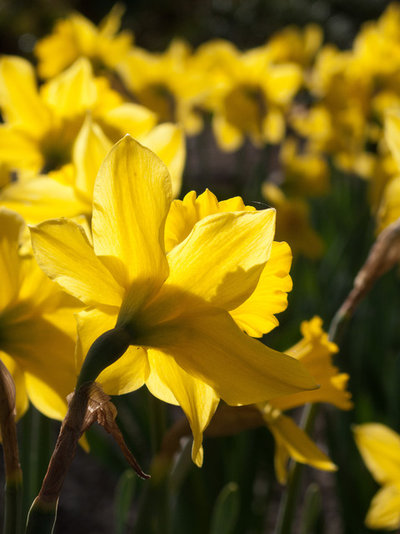
Le jardinet
Time to plant spring bulbs. Start with the fun stuff! We all prefer planting to weeding, and this is the month to get spring bulbs into the ground.
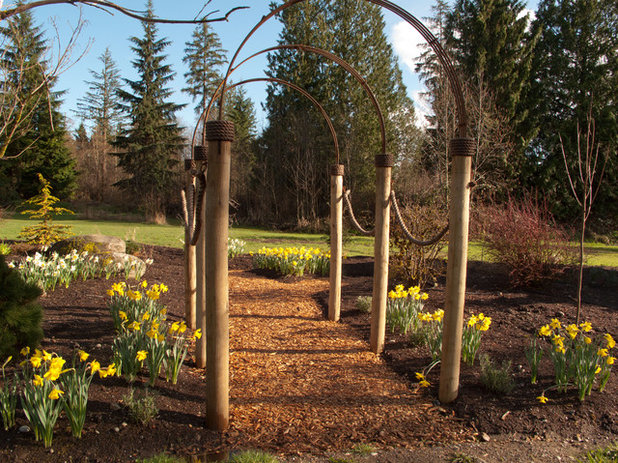
Le jardinet
To many of us,
daffodils are the symbol of spring. They look best when massed in the garden, so try planting them in drifts along a pathway — or tuck them in between late-flowering perennials, such as black-eyed Susan (
Rudbeckia spp). As the bulb foliage dies down, it will be hidden by these emerging perennials.
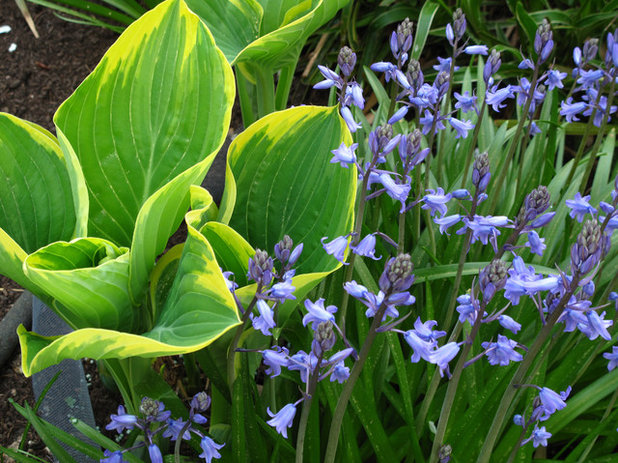
Le jardinet
You can achieve a similar effect in a shade garden with
bluebells planted near
hostas.
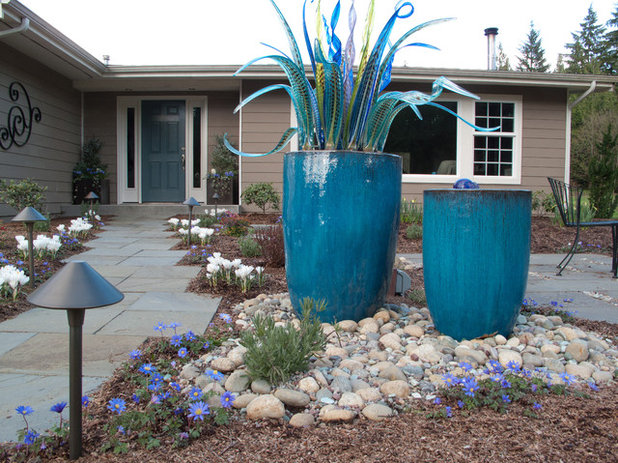
Le jardinet
Think about your overall garden color scheme when selecting spring bulbs. Our front garden is planted in white, silver and blue, so I repeated this with white daffodils, white crocuses and hundreds of periwinkle
windflowers (Anemone blanda). Enchanting.
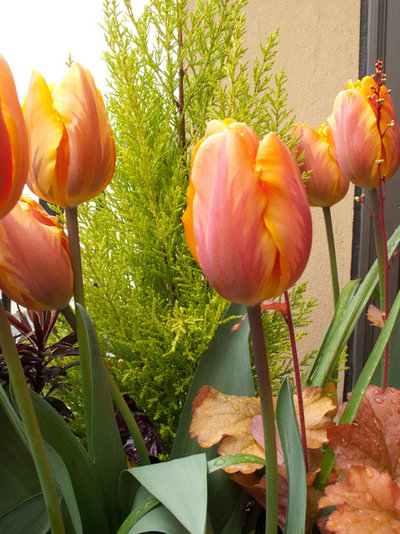
Le jardinet
Plant fall container gardens. Refresh your container gardens with a selection of winter-hardy evergreen shrubs, perennials and seasonal color spots.
Small conifers, bright spurge (
Euphorbia spp) and evergreen sedums are easy candidates for containers — especially when dressed up with a few cheerful pansies.
Don't forget to add bulbs to these containers for an additional layer of interest next spring.
Dwarf daffodils, hyacinths and
crocuses are just a few of the possibilities.
Shown: 'Princess Irene' tulips are stunning with
'Peach Flambe' coral bells (Heuchera).
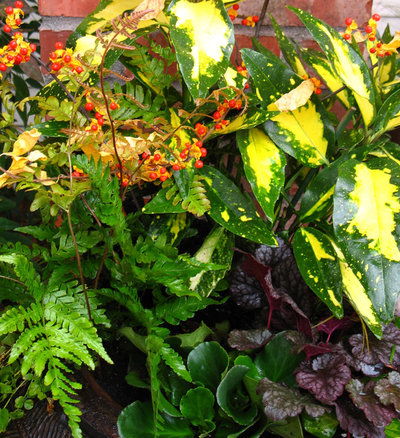
Le jardinet
Focus on exciting foliage to make shade containers as equally colorful. Brightly variegated
Aucuba, coral bells (Heuchera), evergreen ferns such as the orange-tipped
autumn fern (Dryopteris erythrosa) and variegated grasses beautifully round out shady container gardens.
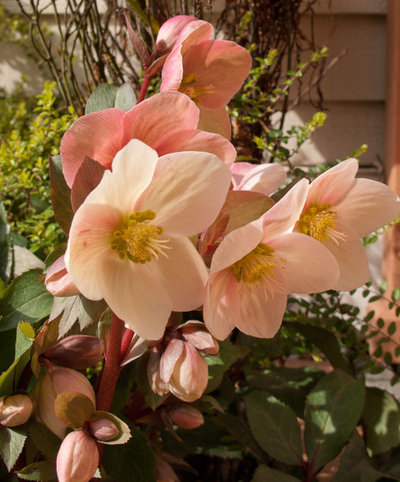
Le jardinet
'Pink Frost' hellebore is a winter superstar, blooming for several months with flowers in every shade of pink — all at the same time! You can also include
snowdrop bulbs in partially shaded pots.
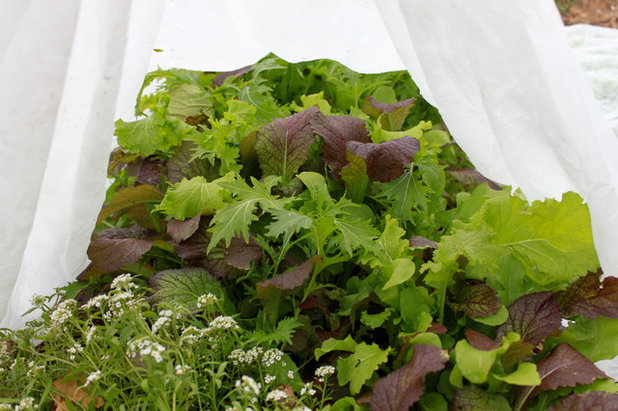
Niki Jabbour
Extend the harvest. Many vegetables, such as Brussels sprouts and parsnips, survive even harsh frosts. Cover more tender lettuce and carrots with a floating row cover (like Harvest Guard) or a cold frame to extend the growing season.
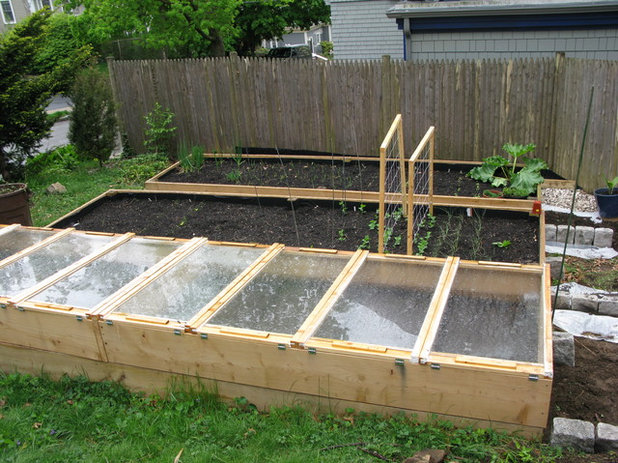
Natalie DeNormandie
While you're in the vegetable garden, take out the last of the summer crops, such as tomatoes and tender herbs. (I hope your basil did better than mine this year.)
Be sure to remove fallen leaves from beneath the apple trees — especially if your trees suffered from apple scab. Do
not compost these leaves. I replace the top inch of soil with fresh compost as an additional precaution to prevent fungal spores from spreading.
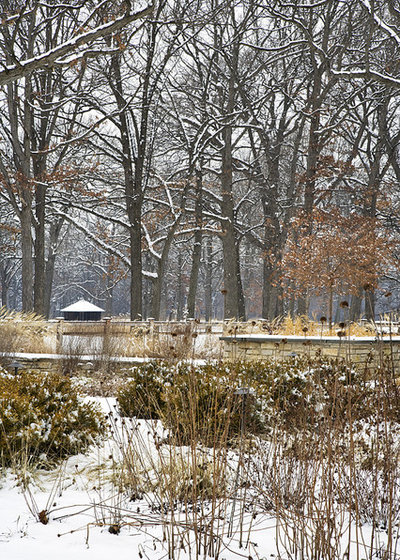
The Garden Consultants, Inc.
Generally tidy up. Soggy
hostas are not the most attractive design statement. Cut them down together with other tired perennials and grasses, but leave a few seed heads from coneflowers
(Echinacea) and grasses as winter food for the birds.
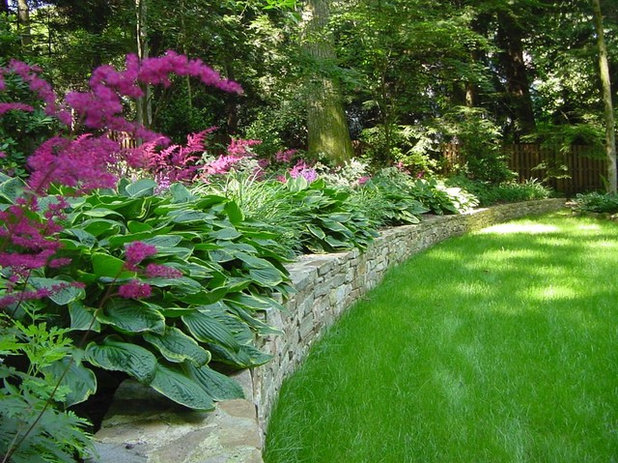
C.M. Jones Incorporated
Divide and multiply! October is a good time to divide many perennials, such as hostas and false spirea
(Astilbe). A swift slice with a sharp spade does the trick for most plants.
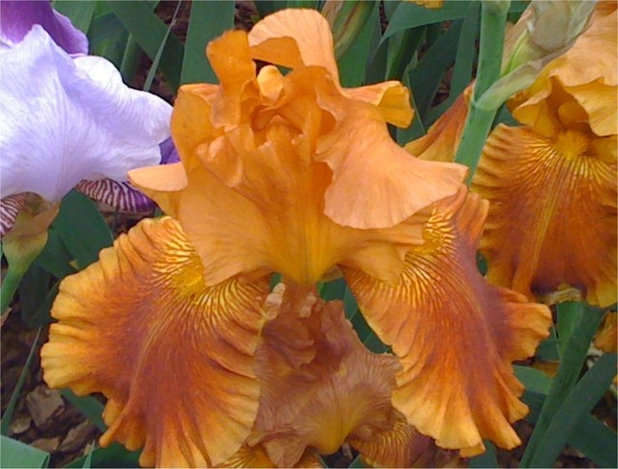
I also need to dig up my bearded iris plants, divide them and then replant with their knuckles visible. Overenthusiastic mulching has buried them too deep, so they didn't bloom well this year.
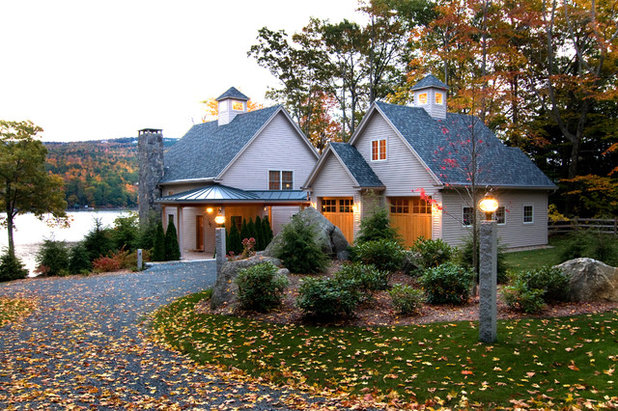
Bonin Architects & Associates
Play in the leaves. Consider leaves nature's gift to the garden. All you need to do is get them to the right place. Those on your lawn can be shredded with the lawnmower, then either added to your compost bin or put straight back onto the garden as a mulch. Do not cover crowns of perennials, however, as they could rot.
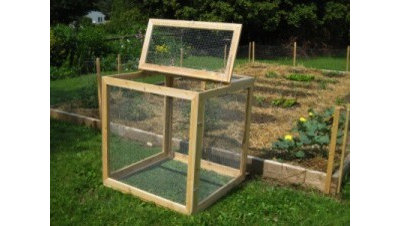
Home Ecology
MVP Complete Compost Bin, Large - $220
Make composting easier. We have a large garden, and the compost bins are some distance away from many planting beds and borders. We therefore have several wire cages for compost hidden behind evergreen trees, but a portable frame such as the one shown here would also work.
I rake the leaves into these and leave them to break down before spreading the rich mulch back onto the garden the following year. It saves moving the leaves twice.
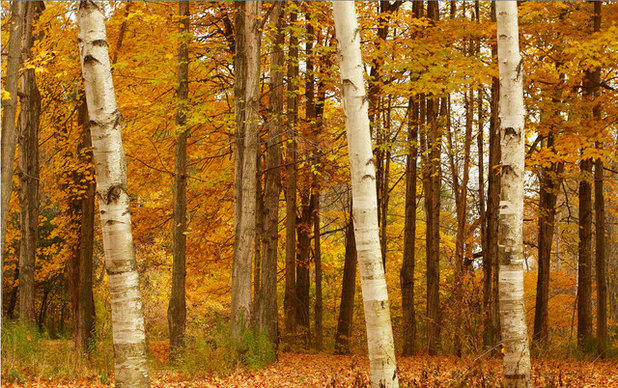 Enjoy the season.
Enjoy the season. Crisp air, sunny days, the fragrance of candy apples from
katsura trees and the everchanging, colorful display of autumn leaves is upon us. Enjoy these days and the opportunity to be outside.
More guides to Pacific Northwest gardening | Find your U.S. garden checklist
Photo courtesy of idog





